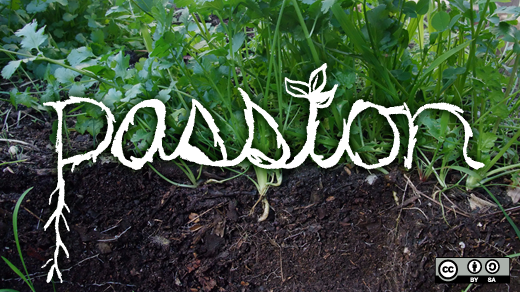To be successful and truly collaborative, knowledge-sharing systems require intuitive tools that connect people, reward participation, and align well with existing work and communication patterns. After IDEO's two-year internal development effort to create and implement "the Tube," their enterprise-wide intranet system, we gained new understanding and experience in balancing technology possibilities with behavior realities. The unique success of the Tube comes from the insight that effective knowledge sharing is a social activity that is enabled by technology, rather than a technological solution bolted onto an existing work culture. Now IDEO's Knowledge Sharing Team shares a set of design principles for building online collaboration systems that really work.
Context

Over the last thirty years, IDEO has grown from a handful of employees in one location to more than 500 in eight locations around the world. With this growth, IDEO’s methods needed to grow as well. We needed tools that would allow the entire organization—individuals, teams, and enterprise-wide groups—to share information and collaborate in a variety of ways. More importantly, these tools needed to encourage natural communities of passion to emerge. To tackle this opportunity, IDEO formed a Knowledge Sharing Team comprising technologists, human factors specialists, interaction designers, and software engineers to create a new suite of online tools that would meet these goals within a highly creative and collaborative culture.
Key innovations & timeline
The Tube comprises a suite of online tools that enables 500-plus employees around the world to collaborate, share learning, and inspire each other as an integral part of their work process. The Tube combines social networking tools such as blogs, wikis, and real-time screen sharing with legacy business systems like HR databases, asset management systems, and e-mail. The system has created ways for individuals to reveal passions and expertise, for teams to learn from each other, for offices to connect more frequently and easily, and for the company to build on shared themes and directions. This led to the design of systems that people actually want to use. Prior to the decision to create the Tube, the team reviewed or tested more than three-dozen collaboration tools and systems. They spoke with leading consultants, technologists, and domain experts in diverse areas such as collaboration, knowledge management, and organizational change. After testing as many systems as possible, we couldn't find any that met the organization's needs and fit within the culture. For example, IDEO’s culture strongly supports collaboration and sharing of information, but several systems are based on the assumption of building credit for yourself by “claiming” information or publishing white papers. The team realized that technology alone does not foster collaboration, and can create nearly as many barriers to collaboration as they enable. This led to a consideration of both technological and cultural incentives that could lead to the adoption of new tools and methods. What followed was a substantial amount of internal research, starting by observing how people work at IDEO, understanding their sources of frustration with current collaboration tools, and getting clarity on what motivates people to share information (or not). Without trying to incorporate “best practices” that would work in any organization, the team crafted a system that works well within the IDEO culture and environment. Based on the feedback they received from sharing their approach with clients and public audiences, the team has learned that the functionality built into the Tube, its ease of use and its intuitive interface, are unique and compelling. Through presentations of the system and the design principles that underlie it, they identified a latent demand for collaboration systems that are both simple to use and fit the culture of the organization they are serving.
Challenges & solutions

The team continues to enhance the functionality and usability of the Tube through ongoing human-centered research and feedback from the community. They see an increasing need for new functionality such as workflow tools, team staffing tools, customer relationship management tools, and others, each of which requires careful consideration before it can be added to the Tube. Another developing need requires connecting the Tube, which is entirely internal and confidential today, both to the public ideo.com website and with IDEO clients for increased collaboration in specific project engagements. Given the sensitivity of the information and new types of collaboration required, this is a major task that the team is currently undertaking. The team believes that inviting IDEO's partners and public to share information and collaborate around shared interests could have enormous benefit to all involved.
Benefits & metrics
Some utilization statistics:
- More than 1,000 Project Pages created in that feature’s first six months (these pages have fields for project storytelling and document collections and sharing. They automatically include all team members who have billed to the project, as well as start date, budget, client information, and more.)
- Over 10,000 wiki pages in the wiki's first 14 months, on subjects as diverse as presentation guidelines and template to travel and sightseeing tips around the world.
- More than 55,000 wiki pages as of today -- a large number for a 500-person company
- 95% of employees voluntarily take ownership of their personal pages (which include their personal blog, fields for long and short biographies, status messages, image sharing, and project work reporting)
- Over 40 special-interest blogs created by teams and individuals, which address company-specific issues such as career growth and office updates, as well as general-interest topics such as social impact, sustainability, and health and wellness projects.


Lessons
Design Principles: IDEO's Knowledge Sharing Team synthesized their findings into five design principles that guided the creation of the Tube, and scale and adapt to inform similar efforts within other organizations.
1) Build Pointers to People: rather than trying to take all of the knowledge out of people’s heads and store it in a giant database, focus primarily on helping people to identify who they are -- their passion, experience, and expertise -- and connect people based on that information.
2) Build Rewarding Systems: a system that requires altruism is unlikely to be successful. Similarly, systems that require users to participate (e.g. compliance-based design) rarely get anything more than participation at the lowest required level. Effective knowledge sharing systems must simultaneously meet the needs of the organization while motivating individual participation. The Tube encourages individual participation in a number of ways, from establishing a platform to allow employees to showcase their best work, to integrating the salary range process and project resourcing process into the system.
3) Demand Intuitive Interfaces: intuitive interfaces are absolutely essential for social software because they facilitate viral adoption. The system must present as few points of friction as possible from the process of becoming an active user. For example, early wiki systems required users to set up an account the first time they wanted to add content, learn special wiki languages to format pages, and build not only the content but also the navigation to support it. These points of frustration discourage users from making the transition from consumers to contributors.
4) Take the Road More Traveled: if a tool requires people to go out of their way to use it, adoption will always be a challenge, no matter how wonderfully designed. Wherever possible, strive to integrate tools into existing work processes -- bring the system to the user rather than the other way around. For example, the IDEO blogging system didn't take off until the team added a program that sends digest emails with new content from the blogs each employee has subscribed to.
5) Iterate Early and Often: building effective systems for organizations means designing tools and workflows that mirror the social systems they are meant to support. This happens through lots of iterative design, beginning with rough in situ prototypes (paper-based or hacked existing systems) and evolving into working systems that can be tested broadly throughout the organization. This process doesn’t end with "launch" either. Knowledge sharing systems should grow with the organization they support, and in turn they shape the organization by enabling new levels of collaboration. Thus these systems and the designers creating them should think of them as an ongoing, evolving dialog with the employees using them. At IDEO, the team pushes out revisions to the Tube (both bug fixes and new features) each Thursday. Much as Google keeps all of its software in “beta” for as long as possible, this reinforce the notion that the Tube is a working prototype and set the expectation for ongoing change, which enhances our user experience without confusing it. When individual passion meets collaborative tools that fit into the flow of one’s worklife, powerful innovations can result. IDEO's goal is to continue to build a platform for innovation that builds on the passions and cooperative foundations of our culture. As is a tradition at IDEO, the team will continue to share with the outside world what they learn along the way.
The Tube has had a very positive impact on the way we work at IDEO. Teams are working using the platform in new ways. People with special interests, talents and passions are easier to identify and invite to collaborate on projects. Passion is the key. Our model is based not on "compliance", which we have seen in many other companies, but on an opt-in model. Connections among people are made based on active collaboration but also by searching for people and ideas and by serendipity. We fully expect to see many other unexpected and wonderful benefits from our approach in the future as the platform and users develop and grow through our collective learning.






Comments are closed.